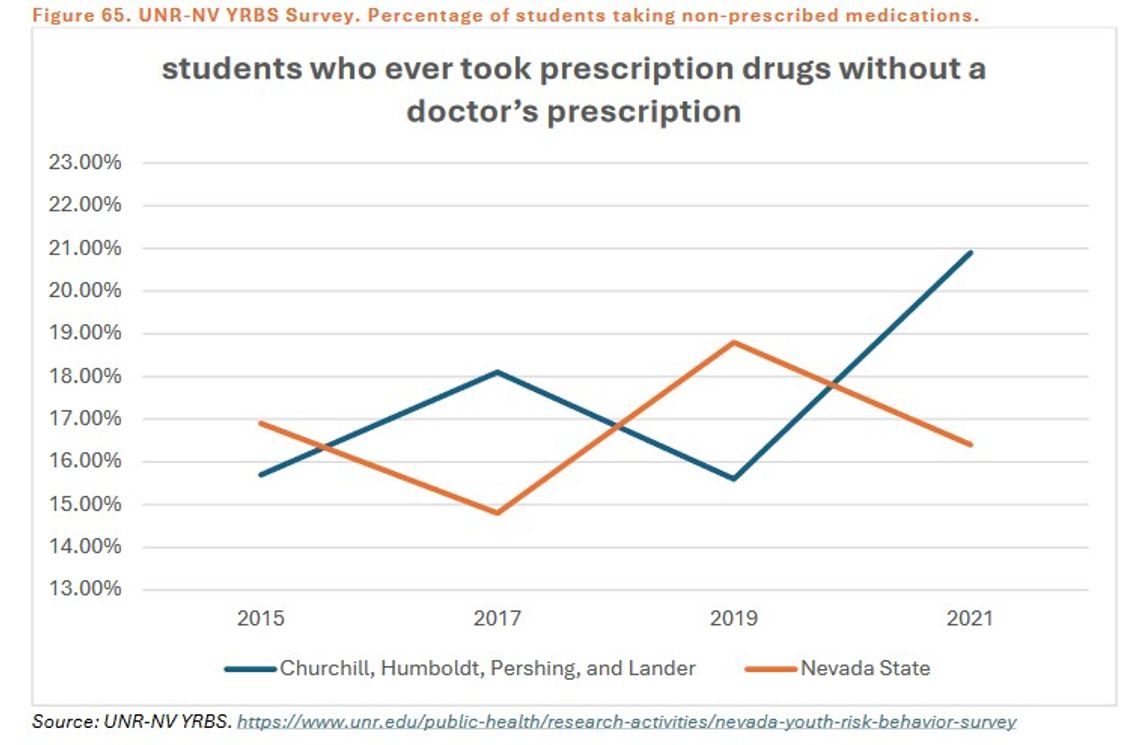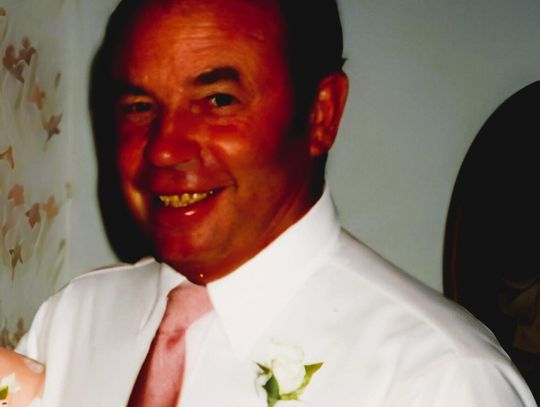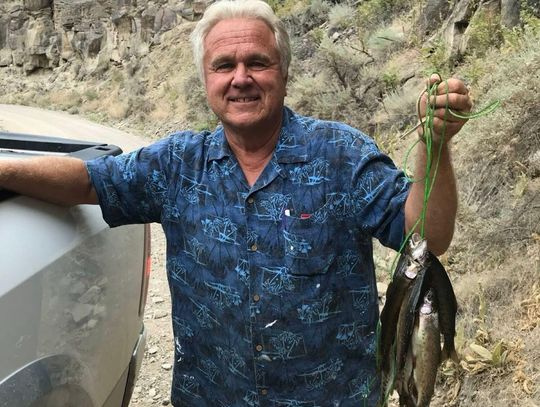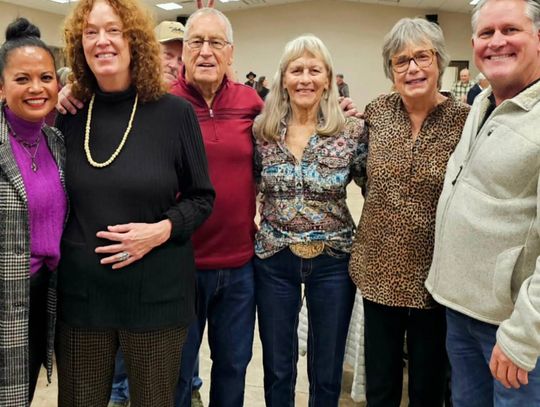Opioid abuse is becoming increasingly common despite large-scale efforts to curb its many damaging effects. Like many states, Nevada participated in litigation, resulting in over $1 billion in settlement funds to be distributed throughout the state.
To be eligible to receive a portion of those funds, counties were required to undergo Opioid Misuse Needs Assessments. In November 2023, Churchill County contracted with Winged Wolf Innovations, which completed an exhaustive assessment. In May, Churchill County Social Services Director Shannon Ernst presented key findings of that assessment to the County Commissioners.
The 2024-2025 Churchill County Budget annotates that $360,000 in opioid settlement funds will be received, with an anticipated $270,000 expenditure through Social Services.
According to Winged Wolf (WW), most opioids in our area are prescribed by physicians for pain management. The North Central Narcotic Task Force confirms this, noting that opioids are generally not being trafficked into the county but are most often sold by legitimate prescription holders trying to make extra money.
Overall dependency has been decreasing, according to the assessment; however, overdoses and crimes encountered have been rising. Last year, Churchill County had markedly higher suspected drug-related overdoses compared to the overall state average. Coupled with data that indicates 100% of client focus group attendees agree that their opioid use was the result of mental illness and/or childhood trauma, the mental health component cannot be overlooked when considering opioid misuse remedies.
One topic not previously covered was student opioid and heroin use in Churchill County. According to the assessment, UNR’s Youth Risk Behavior Survey showed that local high school students have increased their belief that it is somewhat or very easy to get prescription pain medicines. Additionally, there appears to be an upsurge in heroin use in students between 8th and 9th grades. Between 2019 and 2023, the class of 2023 saw a substantial increase of 10%. While the exact reason for that is unknown, the assessment stated, “It is worth contextualizing that the class of 2023 would have been in the 9th grade in 2020 when COVID started.”
In that same timeframe, high school students had a significant decrease in the feeling that it was a great risk to take medications that were not prescribed to them, which was worrying for WW evaluators. Further, a Churchill County School District Representative expresses concern because they are “seeing younger use becoming more normal. At least…slang terms used in the drug culture [are] being used more frequently by younger children.”
Interestingly, no survey responses from children/youth reported their opioid use was related to peer pressure or having received it from family members – only adults answered the surveys and related it to their usage. However, focus groups noted a concerning trend of parents increasingly neglecting drug use among youth. It was cited that “kids feeling like their parents did not care about drug use, or were not around, appeared to be a direct indicator or precursor to childhood drug use that can cascade into long-term misuse.”
Churchill Community Coalition has struggled to engage parents in education programs, said WW, with low voluntary participation leading to the discontinuation of classes. Additionally, affordable community events and youth activities are limited, leaving few alternatives for those who cannot afford sports and expensive extracurricular activities. Focus group recommendations include expanding youth community programs, offering more youth activities, and providing safe, constructive alternatives to drug use. “Overall, both parental and youth diversion tactics emphasize the importance of community engagement, education, and support to address the root causes of substance abuse and provide constructive alternatives for youth,” concluded WW.
As mentioned in the previous articles, the stigma around seeking help for mental health often hinders efforts to address parental concerns. Additionally, apprehensions about potential increases in child abuse due to negative parental responses to substance use emphasize the need for careful implementation and support for any interventions.
Existing adult and youth programs in Churchill County include a Drugs and Sharps Round-Up Program, Prescription Drug Drop Boxes, Sharps Exchange Program, Early Intervention Services through New Frontier, and efforts by the Churchill Community Coalition, the Western Nevada Regional Drug Court Program, and DUI Education Courses.
According to Ernst, current measures on the ground include daily distribution of naloxone, a rescue drug used in heroin and opioid overdoses, by Social Services. “We provide it to law enforcement at their request…If there is somebody who has overdosed, we need to use naloxone, and we need to get them to treatment,” said Ernst.
Social Services and county officials are working to extend beyond their current intervention strategies, beyond the drugs and sharps round-up and judicial programs. The New Frontier Treatment Center offers Early Intervention Services for individuals at risk of developing substance-related problems, which are great programs that need to be continued and expanded, said WW.
“The biggest issue we have in Churchill County is we do not have great data… we are not collecting the data to know truly what our numbers are,” Ernst told the commissioners. However, despite a lack of comprehensive data, the assessment was able to outline several recommendations.
- Ensuring Churchill County and local agencies can implement recommendations.
- Prevent opioid misuse.
- Reduce harm related to opioid use.
- Provide behavioral health treatment.
- Increase the availability of data for rapid response to opioid trends.
Ernst told commissioners she believes that the county can work with Central Nevada Health District to expand its current efforts and do more on a daily basis. “I will not say we can do all of this within the next year but think we have a lot of opportunities. How will we develop better behavioral health and substance treatment systems and beds? That will be a huge undertaking.”
See the June 21 and July 5 editions for Parts I-II or visit us online. For the Churchill County Opioid Use/Misuse Needs Assessment and Plan Recommendations, visit https://nvnaco.org/wp-content/uploads/Churchill-County-Opioid-Needs-Assessment-FINAL-4.25.24.pdf.









Comment
Comments